“When I look today at my personal photographs from my Africa travels more than 60 years ago, I want to try and recall my intentions and the way I moved around with my camera,” says Dieter Hinrichs, the Munich-based photographer who in 1959-60 worked briefly for the Windhoek photo studio Nitzsche-Reiter. At 91, he continues to explore and safeguard his vast archives and not only his and his wife Christiane´s photography but also their diaries.
Leaving Windhoek in December, 1960 their VW Beetle drove them across the continent and back home in four months. Their travels took them through territories and colonies where people eagerly looked forward to liberation, independence, and nation building.
The images in this series are published for the first time.

Our “Cape to Cairo” travels have enriched me until today, have shaped me and let me mature as a person. During these four months we encountered a rapidly changing continent. I photographed intuitively, out of my personal interests, out of a curiosity for people and places. I did not think of a publication nor was I on contract at the time or had any commercial interests. Later, I reflected carefully about whom to give my personal photographs for a publication. This is a question of trust–the images of people whose history I did not know came about by means of mutual respect.
The first images shown here were taken in December, 1960 in Johannesburg, South Africa. As Christiane Hinrichs (1934-2005), herself a trained photographer, wrote in her diary:
This city is ghastly and fascinating at the same time, one cannot stay untouched. It exerts a magical fascination on all of us in various ways, arousing incredible curiosity. You want to see behind the facades. … We will have to stay outside. We don’t have time and no connections, we are puzzled and will have to guess …
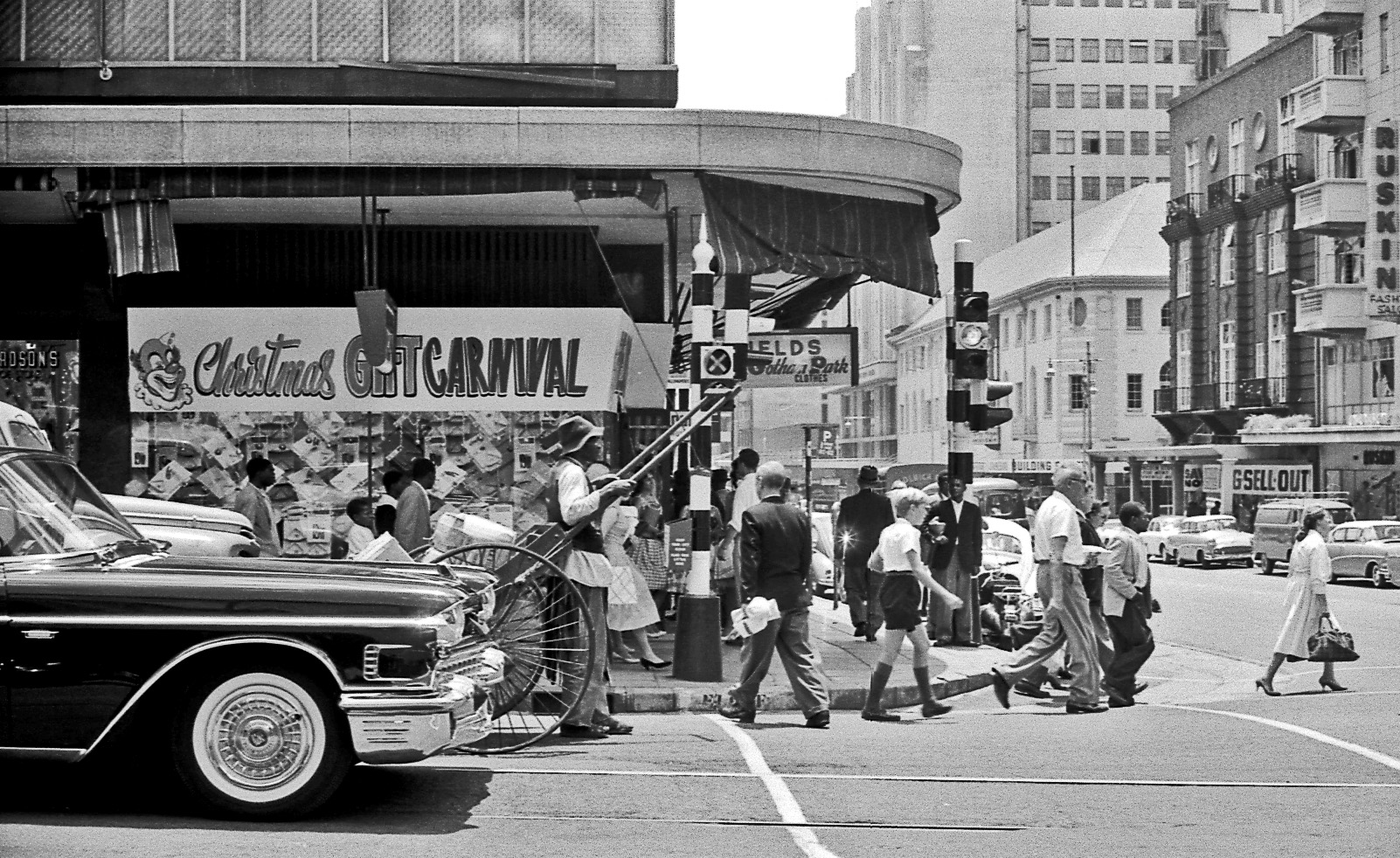
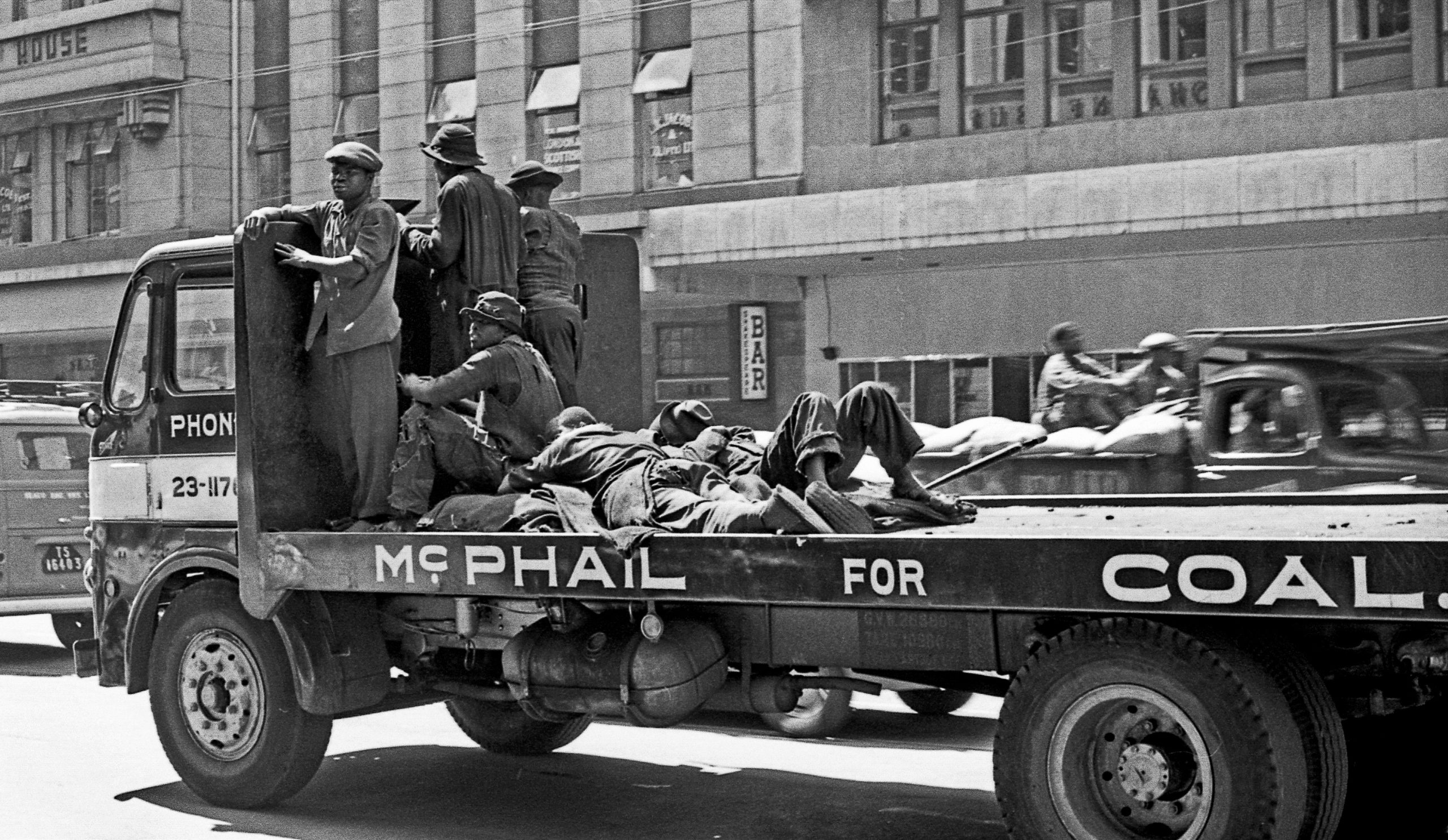
They were captivated by the city’s street life:
The African boys with their simple music instruments: penny whistles, guitars, rattles … play Kwela rhythms in front of audiences on the street corners. They behave like Elvis Presley himself … It´s the Chicago of the Union of South Africa. I´ve never seen so many tough, unscrupulous, sometimes angry faces in my life as here. The faces of the Whites are petrified, those of the Blacks lurking, watching.

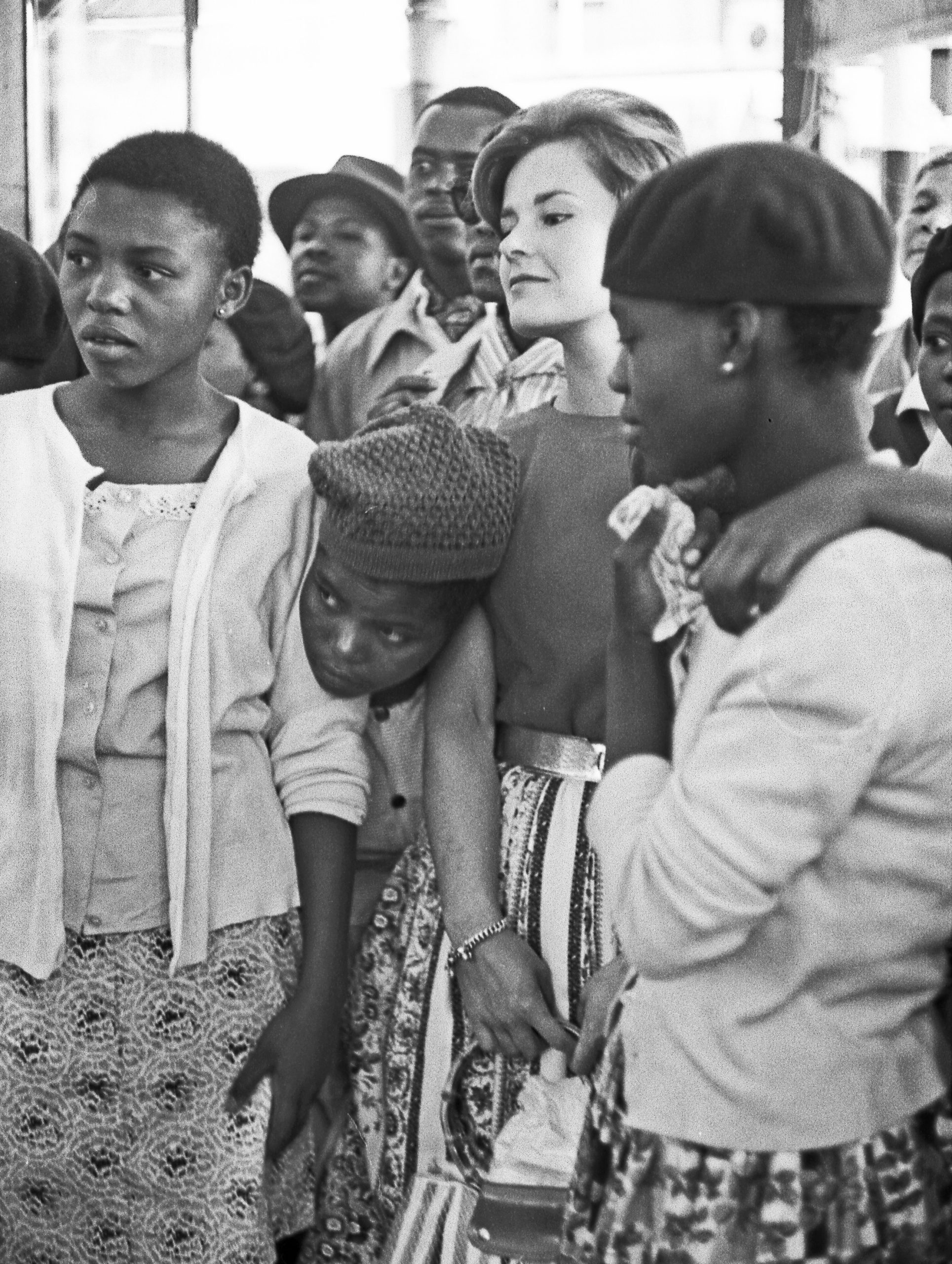
In January 1961 they photographed at the Kariba Dam construction site along the Zambezi River border of colonial Southern Rhodesia (Zimbabwe) and Northern Rhodesia (Zambia). They spent time with art students at the Nairobi College in Kenya, visited Makerere University in Uganda, and also met Kampala´s first African mayor John Ssenseko Kulubya. He told them: “Africa is a sleeping giant who will awake one day.”
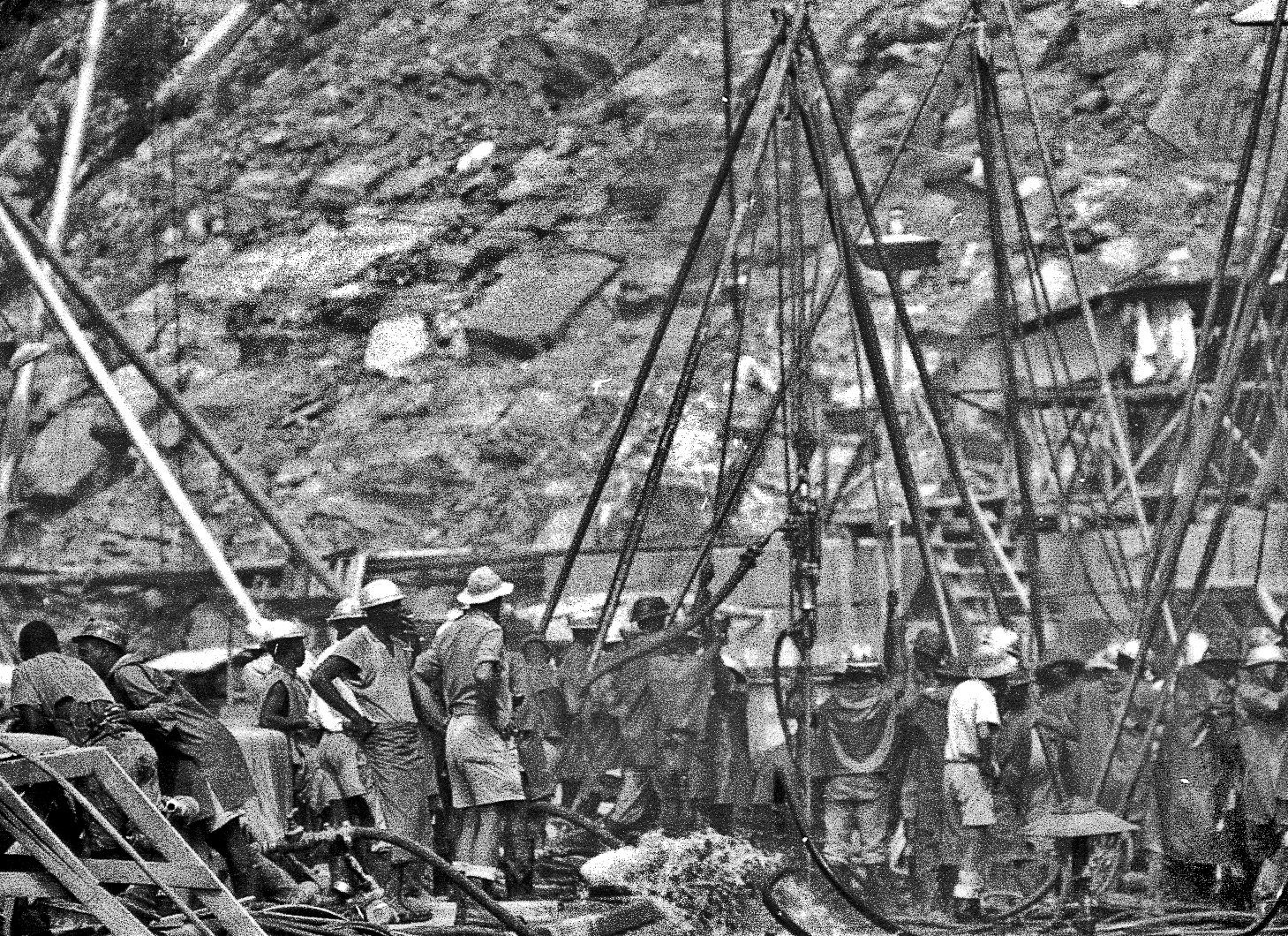
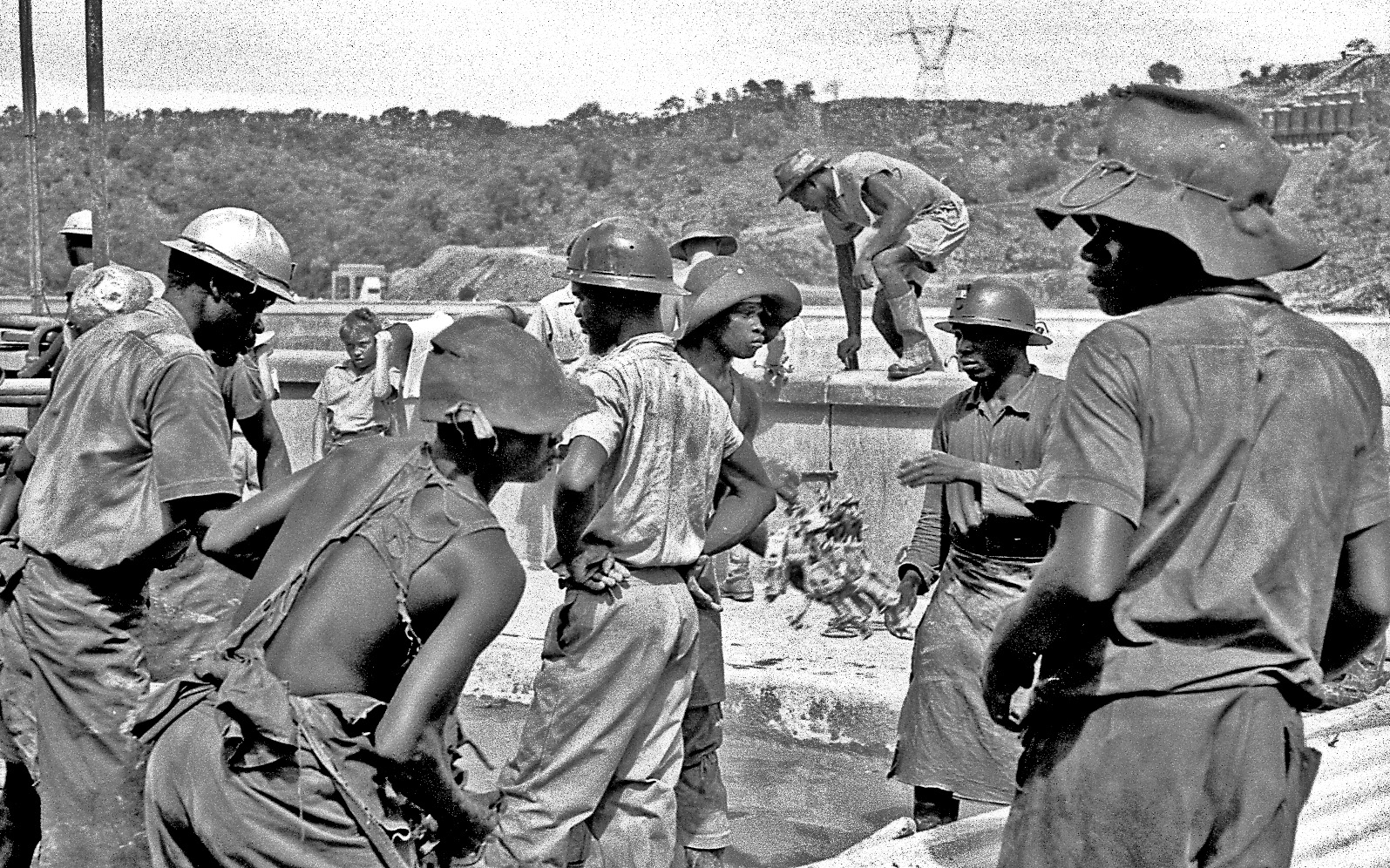

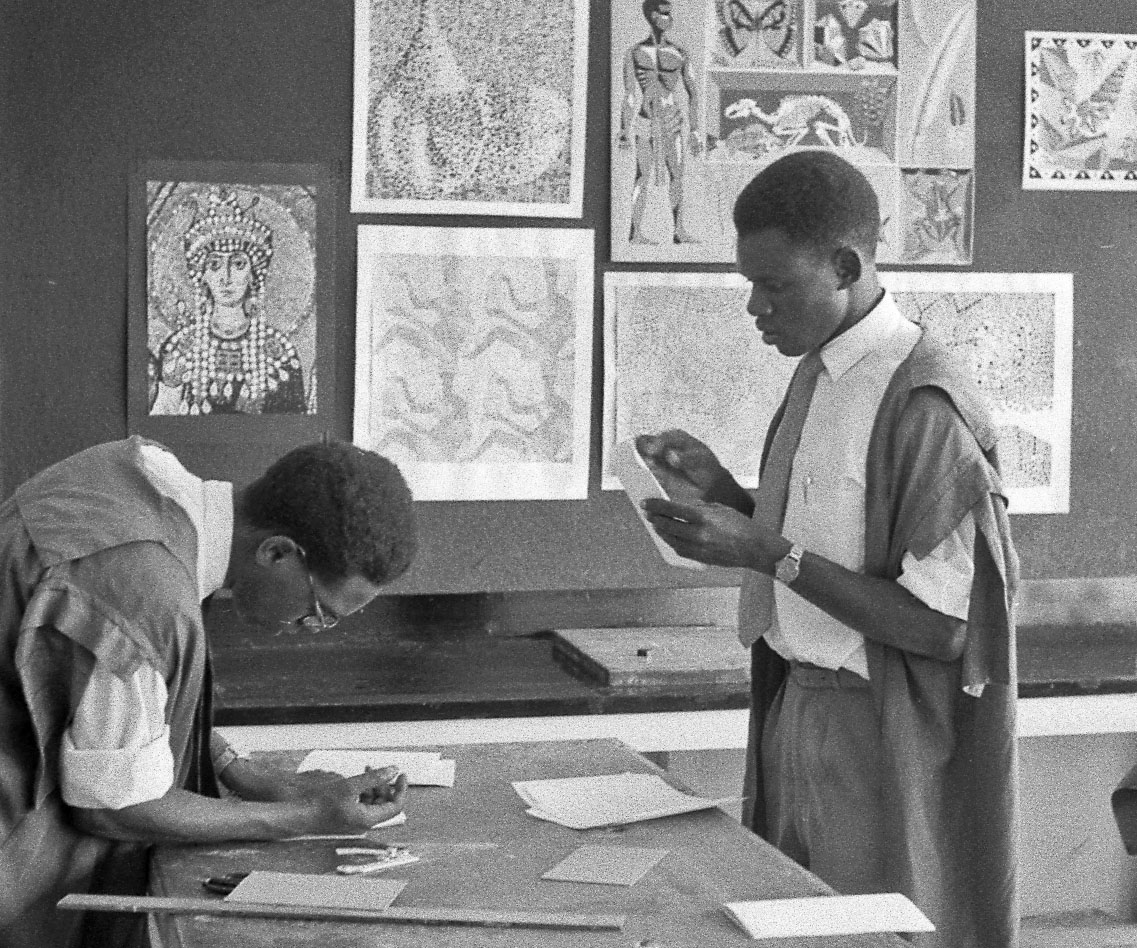
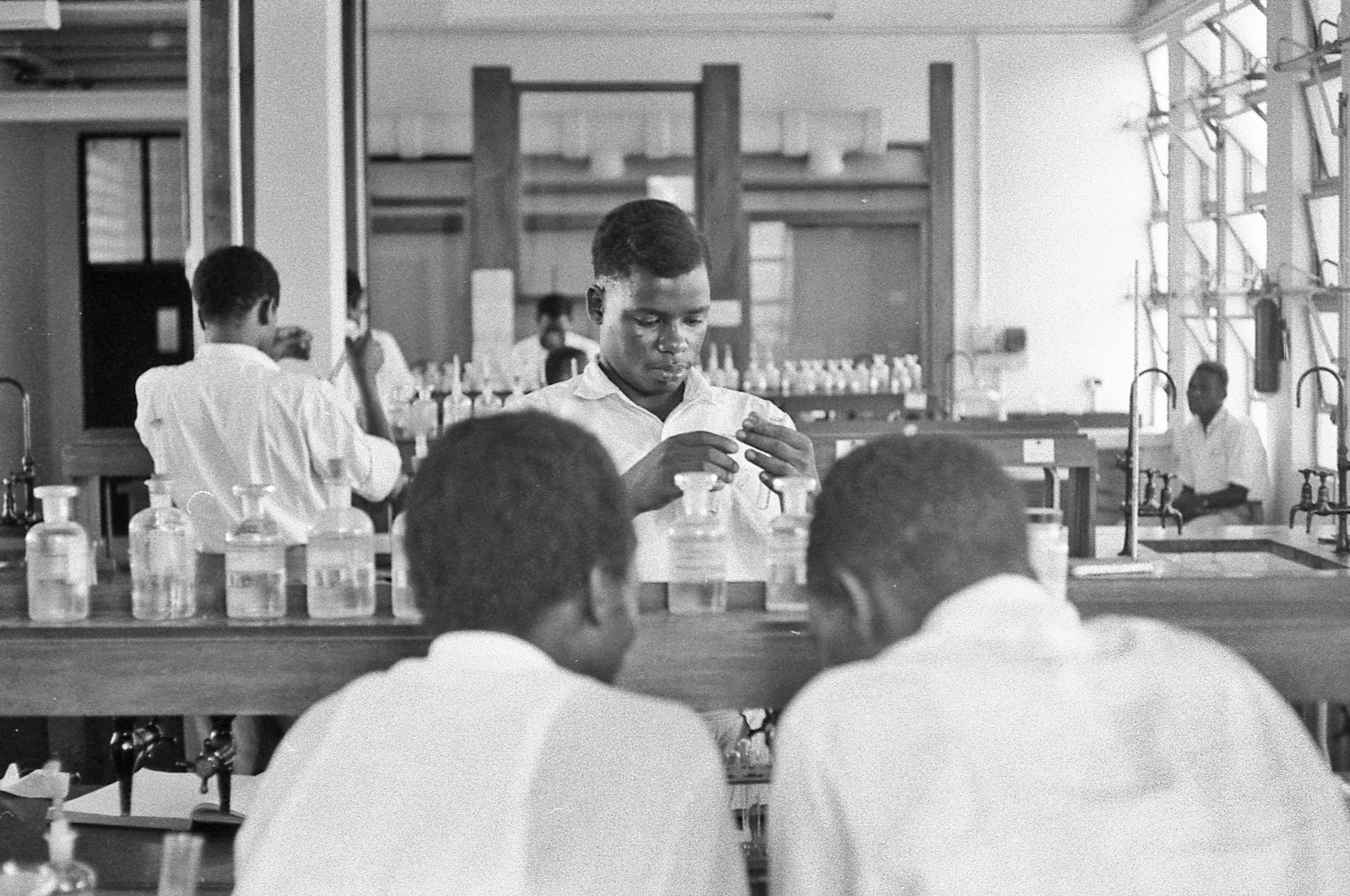
The first independent country they reached was Sudan, until 1956 it had been a British colony. Here, now, they had to register for a “Permit to take Photoes” [sic] which explicitly stated: “Photoes for the naked or semi-naked people are not allowed.” [sic]
In Khartoum, or rather, Omdurman, our VW with a Windhoek number plate and German flag–black-red-gold–nearly led to a catastrophe. A group of people threatened us because they thought that we were Belgians–same national colours, different sequence. This was shortly after the execution, in January 1961, of Patrice Lumumba in the Belgian Congo. Suddenly one student shouted: “Stop–they are Germans.”
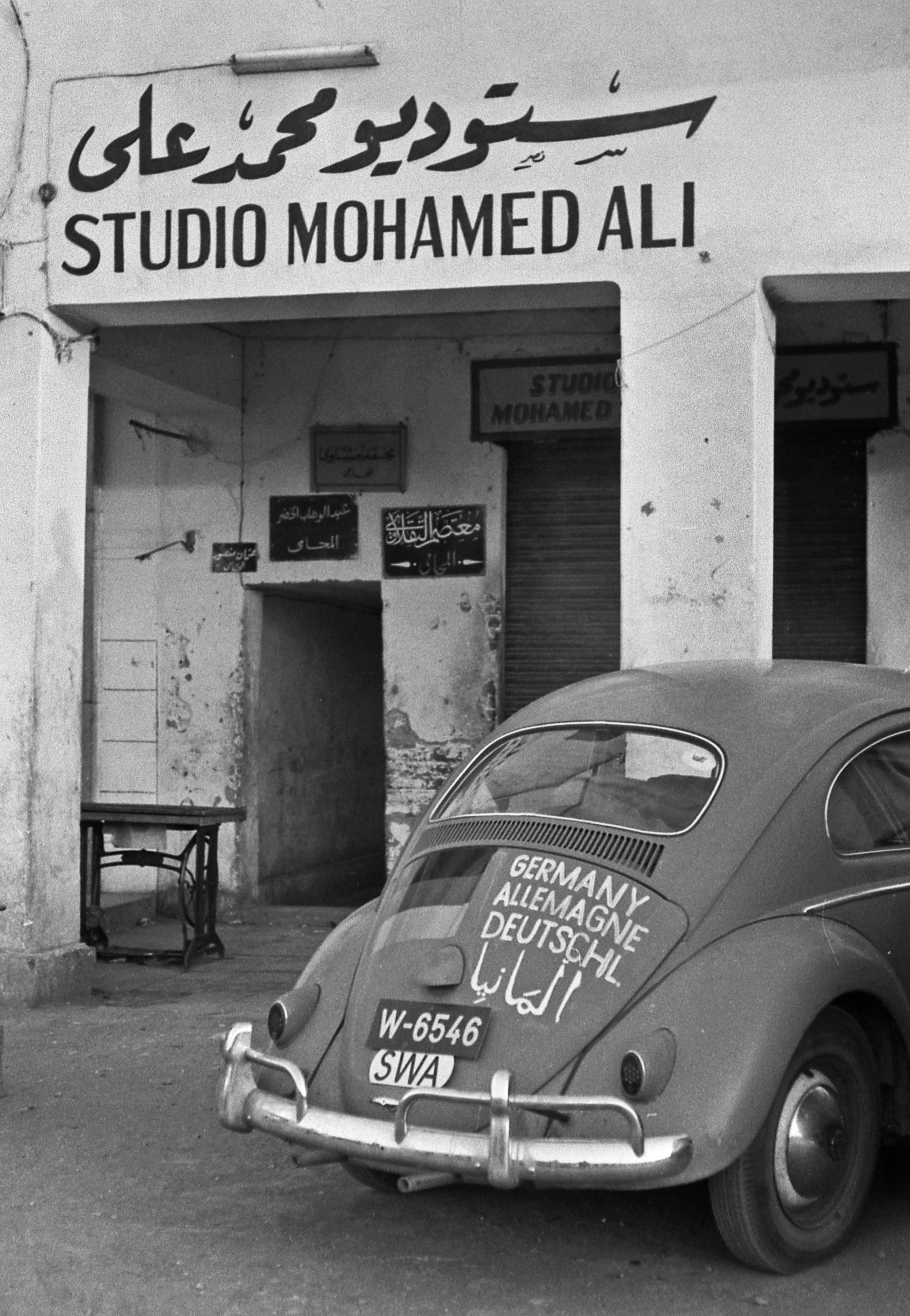
They visited a large construction site at the Sennar Dam along the Blue Nile River, built in the 1920s, before heading north.
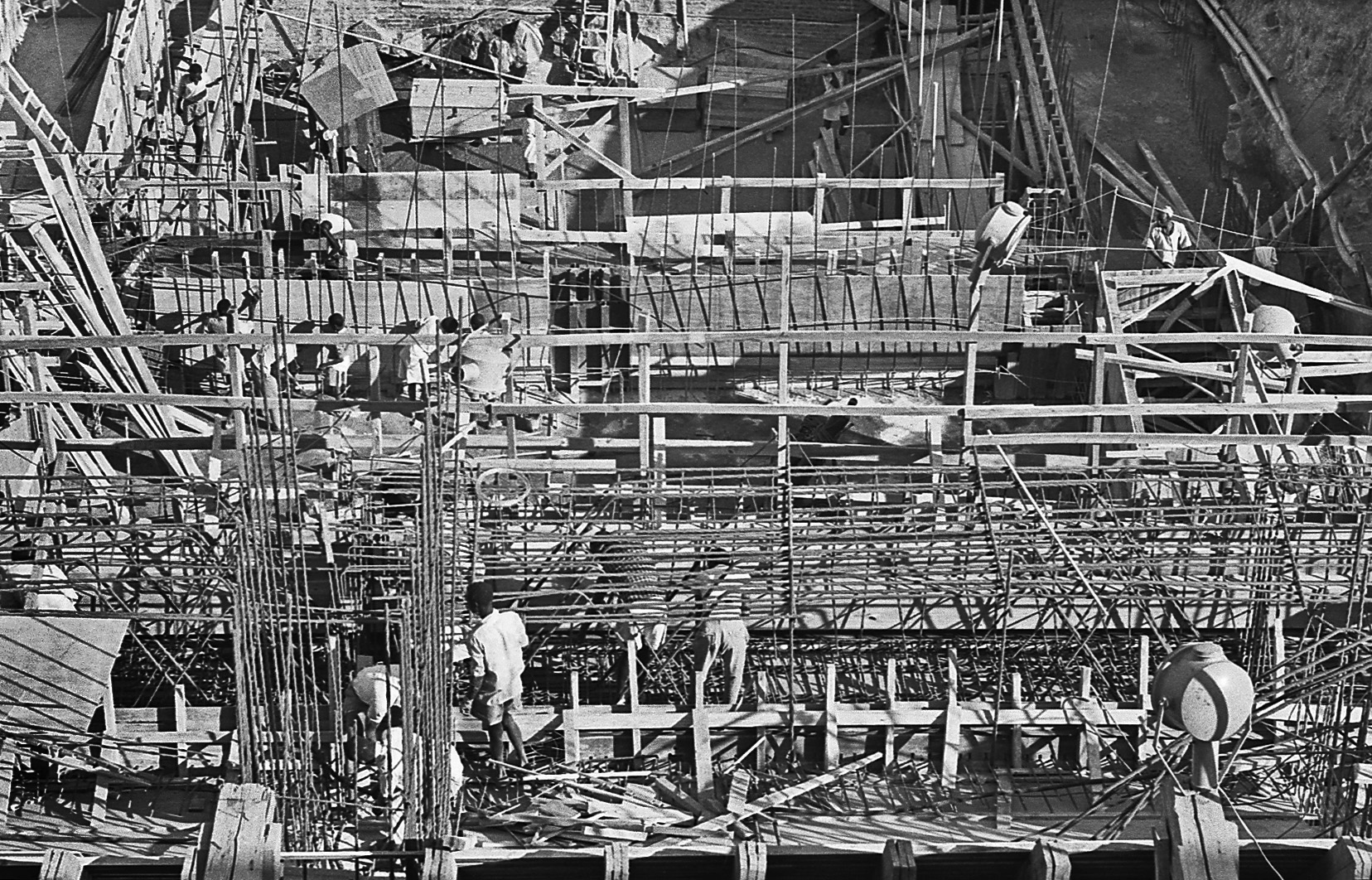
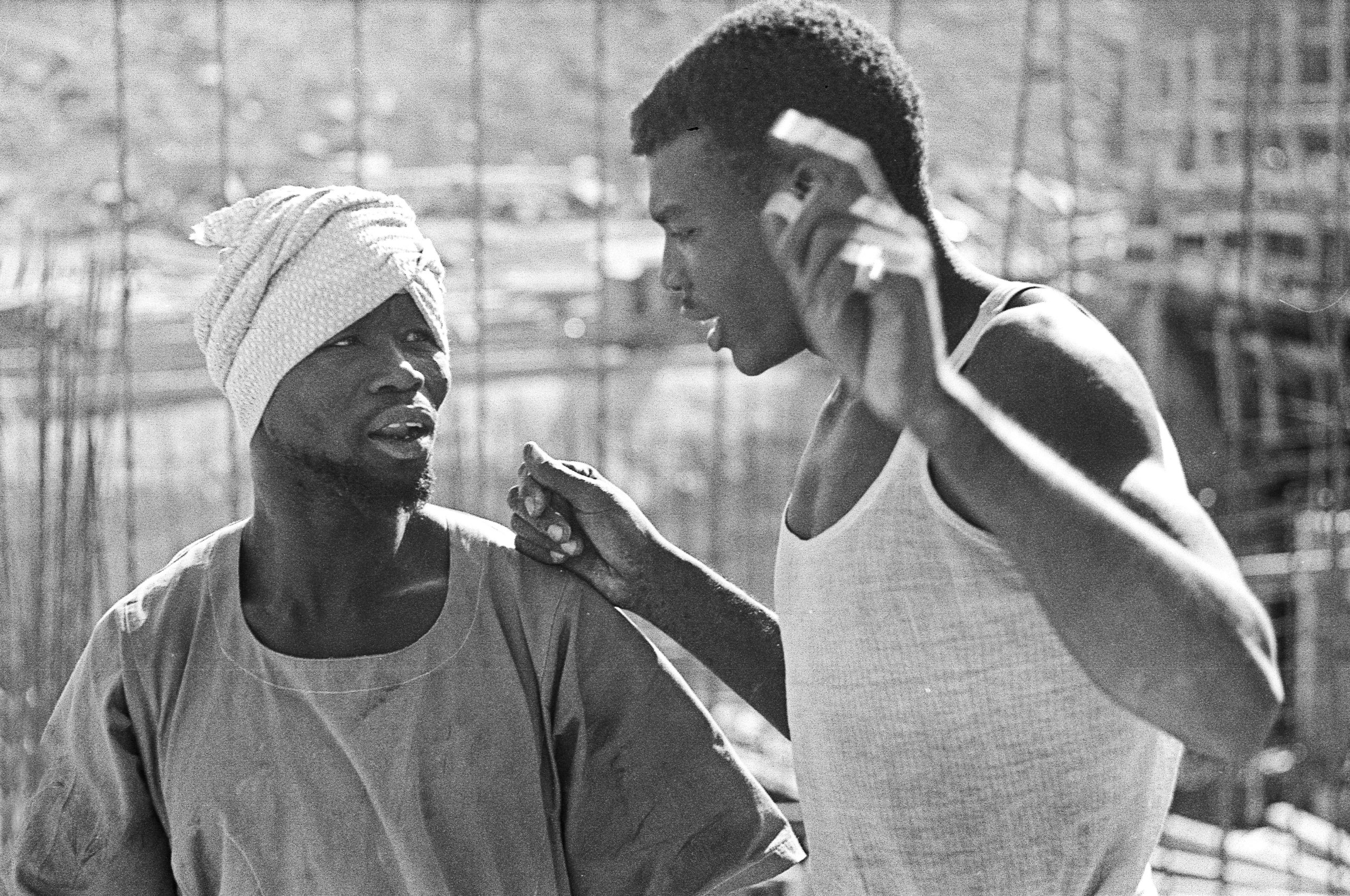
Throughout the trip, Dieter used a Leica M3 (camera with a Hektor 12.5 lens for landscape photography), occasionally using Christiane´s Leica with a Hector Kodachrome colour film.
Usually I photographed people by taking a slight 35mm wide angle because I wanted to be close to people and recognizable, and to feel if I was accepted. Distance and exposure time had to be set manually and there was, of course, nothing automatic back then. And–we would only discover the results weeks later. Exciting!
In general, Dieter Hinrichs remains modest: “If I am lucky I find viewers who will read my photographs in particular ways. And they might also discover a certain poetry which I wanted to give some of my images.”
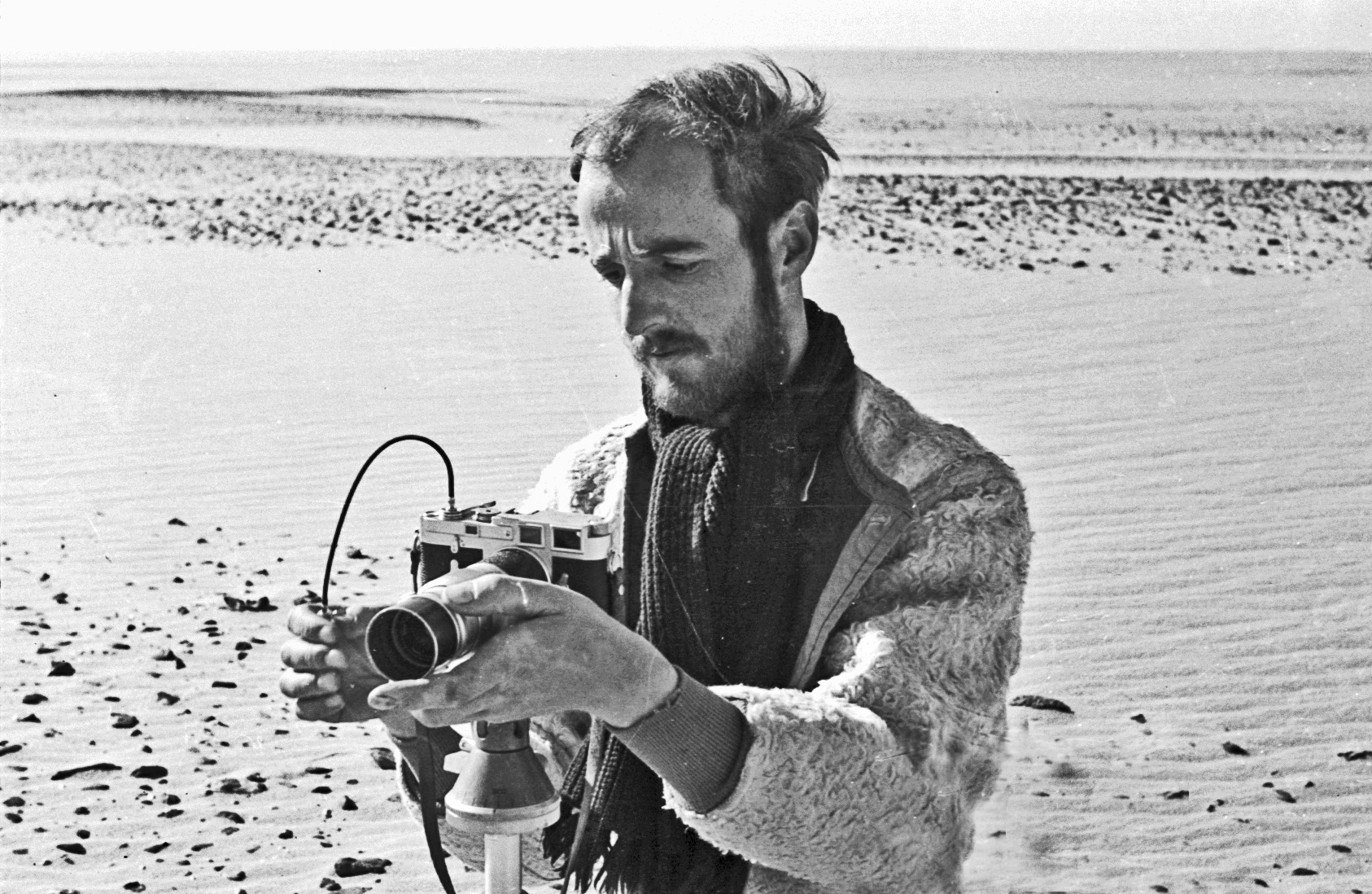
This piece is based on exchanges between Dieter Hinrichs (Munich) and Dag Henrichsen (Basler Afrika Bibliographien) and on Hinrichs´archives. His Namibian photographs were exhibited at the University of Namibia and the National Archives of Namibia in the mid-1990s and since then have appeared in various publications and exhibitions, including the Doek!. His Africa travel photographs, as published here, have been previously exhibited in Munich.
Dag Henrichsen is a Namibian historian at the Basler Afrika Bibliographien (BAB)—Namibia Resource Centre & Southern Africa Library in Switzerland. BAB is the largest Namibia documentation centre outside Namibia. Its vast library and archive holdings are mainly used by scholars working on Namibian historical topics with its website providing information ranging from catalogues, books, comics, posters, photographs, and audio-visual recordings from Namibia.